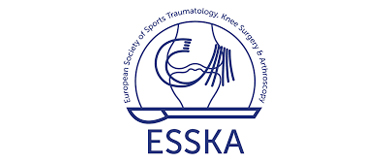
What are Orthobiologics for the Knee?
Use of orthobiologics to treat knee injuries or conditions is known as orthobiologics for the knee.
Orthobiologics are natural substances such as cells, tissue, blood components, and growth factors that are used to aid in the treatment of orthopedic injuries or conditions. They may be used to replace lost tissue, stimulate regeneration, accelerate healing, reduce pain and inflammation, and improve joint function. They are mostly obtained from your own body or sometimes from a donor and may be administered in the form of injections or may require a surgical procedure. Orthobiologics may be used alone as conservative treatment or following orthopedic surgery to enhance results.
When are Orthobiologics for the Knee Indicated?
Orthobiologics for the knee are indicated for the treatment of knee injuries and conditions, such as:
- Articular cartilage injuries
- Early osteoarthritis
- Ligament injuries
- Tendon injuries
Orthobiologics are usually recommended when rest, medications and physical therapy do not relieve symptoms and joint replacement surgery is not indicated.
Types of Orthobiologics
Some of the different types of orthobiologics include:
- Platelet-rich plasma (PRP): PRP is obtained from your own blood after it has been processed to concentrate platelets and certain white blood cells that enhance healing and reduce inflammation. PRP may be injected directly into the damaged tissue during an outpatient procedure or following repair surgery.
- Bone marrow aspiration concentrate (BMAC): BMAC is obtained after processing bone marrow that is removed from your pelvic bone. BMAC is rich in specialized cells, which produce proteins and growth factors necessary for healing and reducing inflammation. Specialized cells are cells that can develop into a particular type of tissue or organ. While there are various types of specialized cells, the ones located in the bone marrow are regarded as the best at promoting musculoskeletal healing.
- Adipose tissue: Adipose tissue or fat cells have remarkable healing and regenerative properties. They are typically obtained from your waist, processed to remove impurities and inflammatory components, and then injected at the site of injury.
- Amniotic products: Amniotic tissue products such as amniotic membrane and amniotic fluid can reduce inflammation and promote healing in tissues due to their cellular content and presence of hyaluronic acid. They are available as injections or patches. Many researches have indicated that amniotic products are capable of reducing pain and inflammation in joints afflicted with osteoarthritis.
- Autologous cell therapy: In this type of orthobiologic, a blood sample is extracted from a vein in your arm and a sample of bone marrow is obtained from the pelvis through a needle. Subsequently, platelets are isolated from the blood sample and specialized cells are isolated from the bone marrow sample. After preparation, these 2 components are injected into the affected knee region using advanced imaging guidance.
Procedure Involved with Orthobiologics for the Knee
Administration of orthobiologics for the knee is typically performed through an injection of the orthobiologics into the knee. During the procedure, you will be seated or will lie on your back with the affected knee flexed or extended. The skin over the injection site is sterilized and numbed with a local anaesthetic. The injection containing the orthobiologics is inserted into the affected knee. In some cases, ultrasound imaging is used to help guide the needle to the correct site.
Postoperative care
Postoperative care will include the following instructions:
- Avoid strenuous activities for a couple of days.
- Apply ice on the injection site for comfort.
- Rest, elevation, and medicines are recommended to relieve pain and swelling.
- Gentle range of motion exercises is recommended.
Risks and Complications
Orthobiologics for the knee is a relatively safe procedure; however, as with any procedure, there may be some complications, such as:
- Infection
- Nerve damage
- Swelling
- Blood clots












